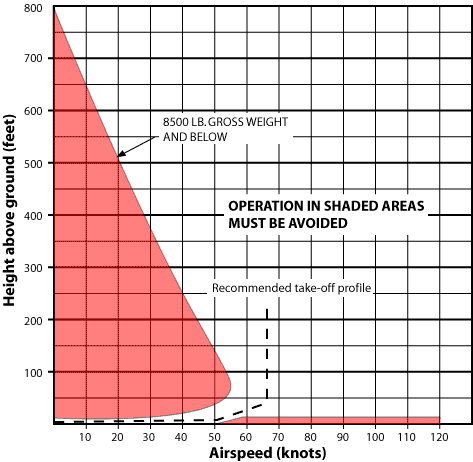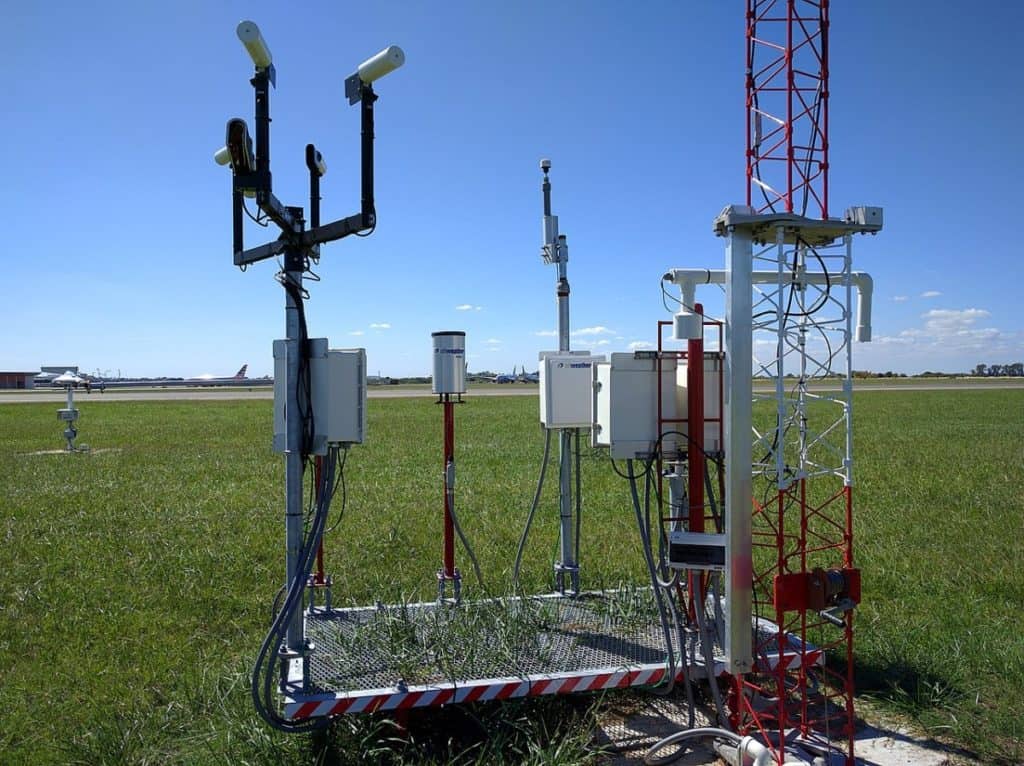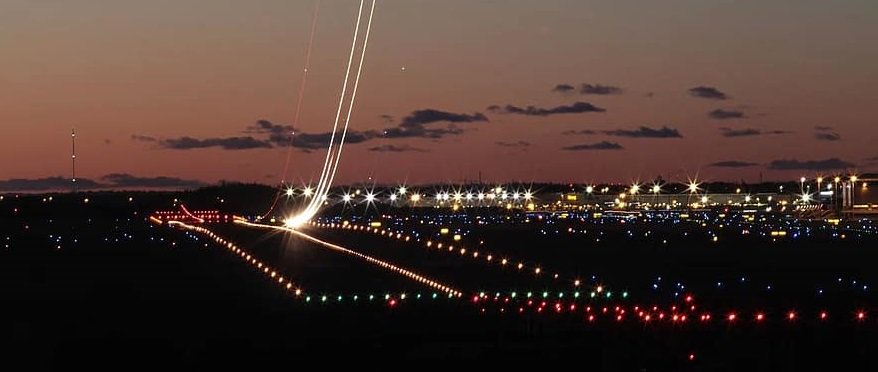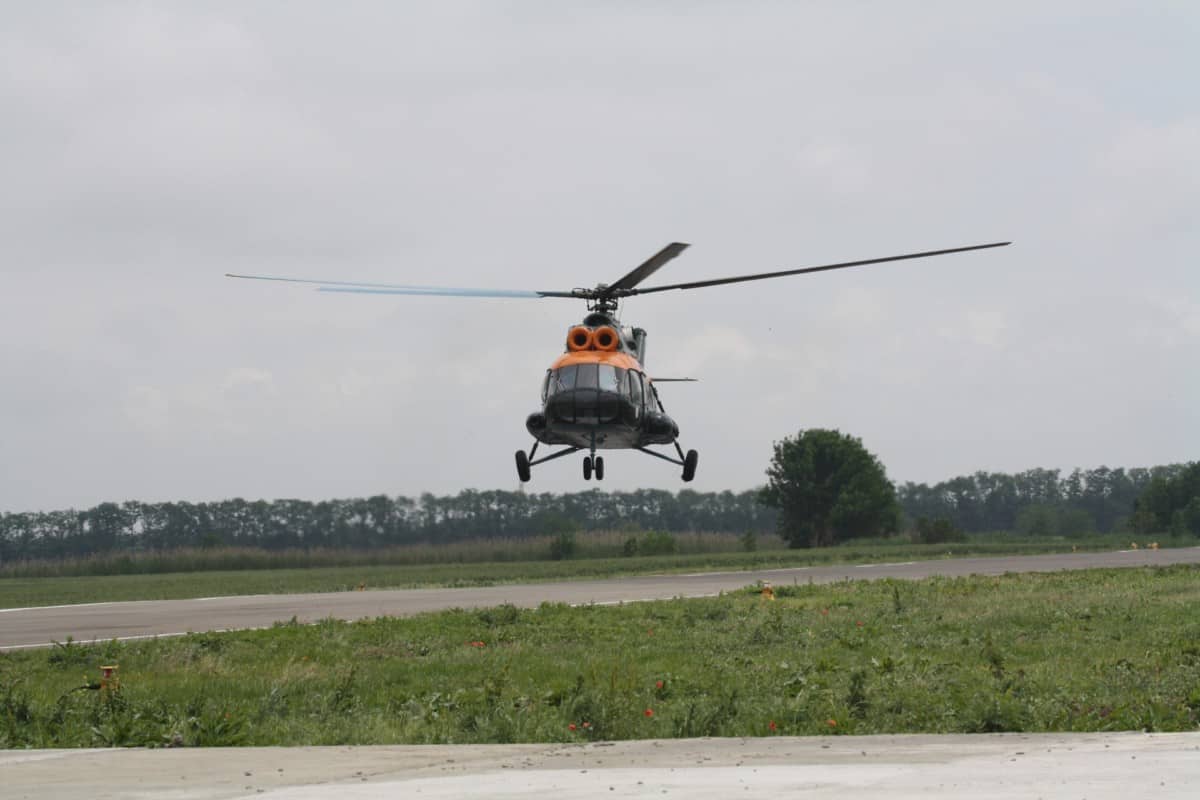
We all know that helicopters can lift straight up and take off, so why is it we sometimes see helicopters taking off and landing on a runway? It’s only airplanes that use the runways, right?
Runways provide clear areas for safe acceleration & deceleration of helicopters to avoid hazardous flight parameters. Dust & debris is regularly cleared from runways preventing rotorwash damaging other aircraft & property. In low visibility conditions, the runway lighting system helps pilots see.
As a pilot, it all comes down to operational choice when deciding to use a runway or not. There are many factors that affect that decision and these factors can change on an hourly basis making the use of the runway preferable or not.
Here are some of the main reasons why you will see a helicopter using a runway to land and takeoff.
Recommended Flight Profiles
Every helicopter with only a single engine will have a chart published by the manufacturer called its ‘Height/Velocity Diagram’ – Also known as the ‘Dead Man’s Curve’. Each manufacturer’s diagram is slightly different in terms of its values, but they all look very similar to this.

The areas in red are the areas to avoid flying in because if the engine were to stop when the aircraft is in one of these red areas, a safe autorotational landing may not be achievable. A helicopter’s best friends are Height & Airspeed. If you don’t have one, try and get the other. If you don’t have either and the engine stops, then you need luck on your side!
As a pilot, if you want to be in a high, zero-airspeed hover, try and be above 800ft above the ground if flying a helicopter for which this diagram applies to. This gives the pilot time to drop the nose and accelerate to perform a safe autorotational landing.
If you want to be low & fast, try flying above 15ft above the ground. This will allow the pilot to balloon the aircraft up into the air and gain height to perform an autorotational landing if the engine stops.
For Example:
When taking off, the chart tells the pilot to remain around 5ft above the ground until accelerating to 50kt, then begin the climb out.
This gives you speed when you don’t have height.
If the pilot were to take off vertically to 100ft before accelerating away and the engine quit before the aircraft reached around 54kts, the chance of a safe autorotational landing is slim.
This is the main reason why a runway is used by helicopters with only one engine. To provide enough room to accelerate to 50 kts before climbing away.
Helicopters with two or more engines are not generally bound by the same diagram as they usually have the capability to fly away on just a single engine, if one were to fail.
Obstruction Avoidance
This one may seem obvious and it is. Runways are generally clear of obstacles that can be hit by a helicopter. I say generally because there are times when the runway is occupied by other aircraft, vehicles, and wildlife.
If a pilot taxis to and departs from a runway they will be guaranteed not to hit anything, providing the runway is clear. This is especially important when operating in low visibility conditions or at night.

When I was instructing, one night I saw a helicopter approaching to land and come frighteningly close to hitting a small radio antenna in one of the grassy areas. If the pilot had made their approach to the runway this near-miss would never have happened!
FOD – Foreign Object Debris
Helicopters create their own windstorms from the rotorwash and an item caught by this wind can create anything from a minor irritation to millions of dollars in damage.
FOD can be anything from dust, sand, garbage, washers, nuts, wigs, hats, or anything that can be moved by the wind created from an aircraft. I had to be so careful of this when flying the air ambulance and landing at patients’ properties, plastic lawn chairs and tarps were the usual FOD culprits!
Airports have very strict apron, taxiway, and runway cleaning policies to ensure that FOD is not present to cause damage. Wheeled helicopters can ground taxi using far less rotorwash than air taxiing. When there are multi-million dollar aircraft parked close by, ground taxiing to the runway and departing will prevent less dust and debris from peppering those aircraft compared to a vertical take-off straight from the hanger.
If a helicopter does not have wheels, a vertical takeoff from the hanger may be preferred, but this would then put the helicopter into the H/V diagram. This is where an operational decision would be made by the pilot.

Join My Newsletter & Get Great Tips, Information and Experiences To Help You Become a Superb Pilot!
Air Traffic Control
At busy airports, air traffic control (ATC) may require the pilot of the helicopter to taxi and takeoff from the active runway to help with traffic separation. All airplanes landing and taking off follow a set flow into and out of the airport.
For a helicopter to then go screaming through that flow in a totally opposite direction could create additional work for the air traffic controller at a very inopportune time.
Many a time I have been cleared to leave only from the runway and fly the runway heading before ATC has given me permission to turn on course. This doesn’t happen too often, but it is a common reason why helicopters may use a runway to takeoff.
Low Visibility Conditions
Being able to see when landing and taking off is quite an important factor I feel. I know I rely on my sight during those times, however, mother nature can create conditions that turn a perfectly clear day into zero visibility in the blink of an eye.
Weather
Heavy rain, fog, very low cloud, mist, and smoke from wildfires can drop the forward visibility to nothing. To help guide the helicopter around the airport and onto the runway pilots will use the airport lighting systems to help them see and navigate.

Offshore helicopters can take off in as little as 1/8sm visibility. They will begin accelerating and takeoff to around 5-10ft while continuing to accelerate to around 60 knots, at which point the pilots will climb away into the murkiness of the day.
Lifting from a helipad and flying away requires far more visibility and cloud height, usually at least 1/2 to 1 mile. By using the runway, commercial helicopters can depart when the weather is much worse.
Snow & Dust
Areas of snowfall and sandy, dusty areas will be turned into zero visibility the second they get picked up and blown around by a helicopter rotorwash.
Watch this video of a CH53 doing just that:
To help prevent this, especially when taking off or landing on dusty runways, helicopters with wheels can do a running takeoff or running landing which keeps the dustball behind the cockpit, allowing the pilot to see.
For helicopters with skids, this proves more difficult as they have to lift into a hover to move the aircraft, however, the helicopters with skids are smaller and tend to not create as much of a whiteout/brownout as their larger and heavier counterparts.
Why Do Helicopters Use Helipads?
Helicopters use helipads as they provide a clear area for approach, landing, and departure. Most helipads are surveyed to ensure the areas around the pad are cleared of obstacles and obstructions or those obstructions are lit with lights or marked for pilots to see. Helipads are also kept free of debris.
Think of helipads like a miniature runway. They provide the pilot an aiming point to land that is clear of obstructions, debris, and people. When a helipad is designed it also has approach and departure corridors designed to allow the safe ingress and egress for the helicopter both day and night. These corridors can be published so the pilots have a clear understanding of the safest routes in and out.
Helipads are most commonly found at hospitals, building rooftops, city heliports, and luxury premises. Having a designated area for helicopters to operate to and from keeps the risk associated with helicopters to a minimum.
To Finish
Helicopters will mainly use the runway to provide a safe area for departing and landing to give the pilot the greatest chance of success if an emergency occurred. Keeping dust and debris from creating problems for the pilot, other aircraft, property owners, or bystanders is solved by also using the runway.
A runway is not always the best option for a pilot but generally, if it’s available it makes good sense to use it.
Further Reading
If you found the article helpful, you may also like these:


